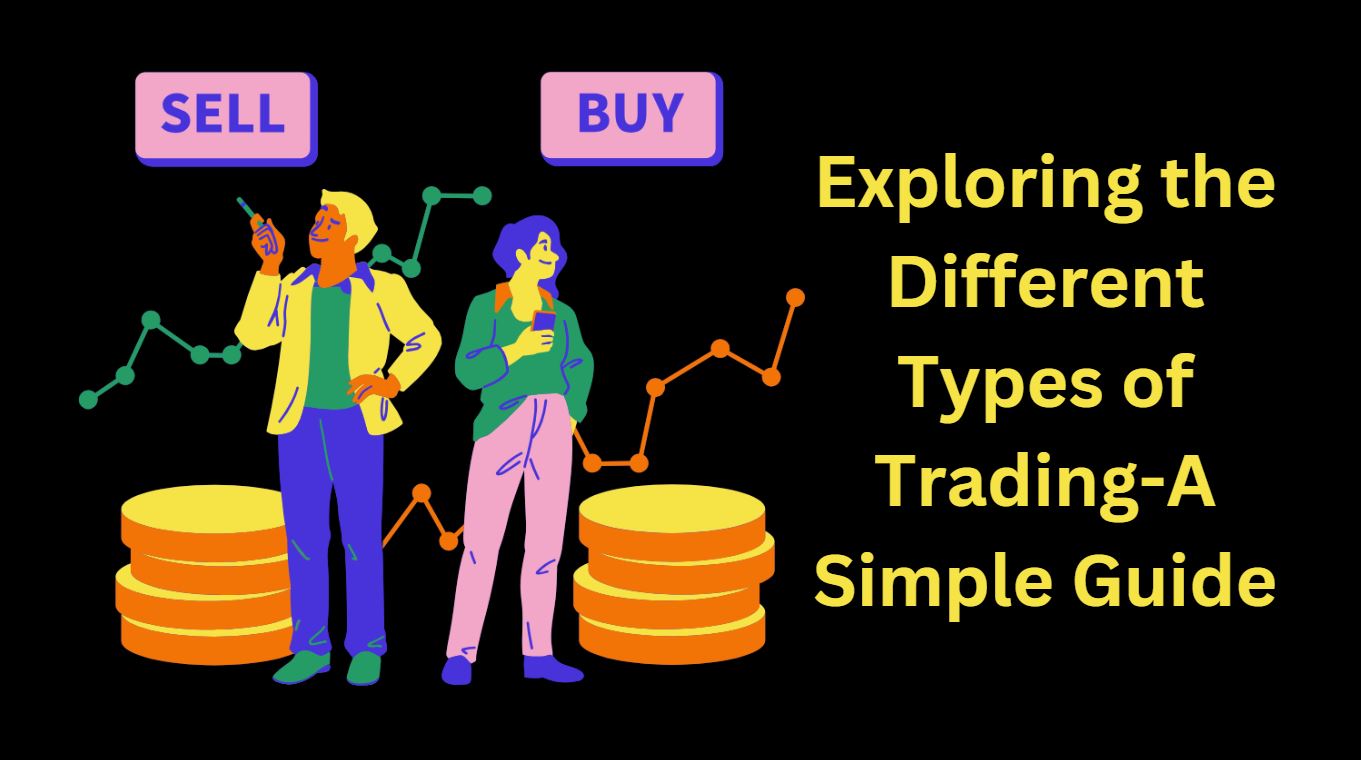- Likes
- Followers
- Followers
- Followers
- Subscribers
- Followers
- Members
- Followers
- Members
- Subscribers
- Subscribers
- Posts
- Comments
- Members
- Subscribe
Exploring the Different Types of Trading-A Simple Guide

There are many different types of trading, each including unique methods and strategies, making trading a broad and dynamic industry. Anybody trying to navigate the financial markets has to learn trading, analyzing stocks before starting trading. First you need to understand all the different types of trading. Traders can choose from a variety of trading techniques according to their financial objectives, risk tolerance, and preferences. I’ll go over some of the most popular forms of trading in this post, explaining the special traits and things to keep in mind for each.
The following are some of the different types of trading and their distinctions.
1. Day Trading
Day trading is the practice of purchasing and selling financial products inside the same trading day. Day traders seldom keep positions overnight in an effort to profit on transient price changes. Technical analysis proficiency and quick decision-making are essential for this kind of trading. During a single trading session, day traders concentrate on taking advantage of short-term trading opportunities. All of their trades are opened and closed in the same day, usually in a matter of minutes or hours. For fast trades, day traders use liquid products like futures, equities, and FX.
2. Swing Trading
The primary objective of swing trading is to capture price “swings” within a trend. Traders try to profit from short- to medium-term market changes by holding positions for a few days to weeks at a time. For people who have a little longer time horizon, this strategy is more flexible than day trading. Swing traders hold positions for a few days or weeks in order to profit from short- to medium-term changes in the market. Using technical analysis techniques, their goal is to identify trends and profit from price changes within a bigger move.
3. Position Trading
With positions held for weeks, months, or even years, position trading entails adopting a long-term perspective. Individuals that trade using this approach base their choices on long-term market trends, macroeconomic patterns, and fundamental study. Position traders keep onto their trades for extended periods of time, often up to years. They pay less attention to rotations in the short term and more attention to general market patterns. Technical analysis and patience are the two main tools used by position traders.
4. Scalping
Traders that use the high-frequency trading approach of scalping aim to make money off of slight fluctuations in price. Usually, positions are held for a very brief period of time—sometimes even a few seconds. Trading this kind of investing calls for a high volume of trade execution and advanced technical analysis skills. Scalping is the practice of taking short positions—anywhere from seconds to minutes—in order to profit from tiny price movements in a stock. Scalpers need to be disciplined and have fast decision-making skills in order to profit from slight price variations.
5. Algorithmic Trading
This approach, which is often referred to as automated trading or Algo trading, involves executing trades using computer algorithms. Algorithms are designed to make decisions according to predetermined rules and specified criteria. You can use algorithms for trading on a range of timeframes and strategies.
6. Options Trading
Buying and selling options contracts gives traders the right—but not the obligation—of having to purchase or sell an asset at a predefined price within a given window of time. This is known as options trading. Hedging strategies and flexibility are possible with this kind of trade. Developing strategies based on options contracts requires objective and mathematical reasoning, which is what options trading requires. Because options strategies are complex, traders need to put in a lot of practice and time to build good ones.
Posts You May Like
7. Forex Trading
Currency exchange is a part of forex, or foreign exchange trading. The goal of traders is to make money off of changes in currency values. The forex market is one of the most accessible markets for traders globally since it is open twenty-four hours a day, five days a week.
8. Cryptocurrency Trading
Purchasing and selling digital currencies like Bitcoin, Ethereum, and other ones is known as cryptocurrency trading. Due to its well-known extreme volatility, the cryptocurrency market offers chances for traders with varying time horizons.
9. High-Frequency Trading
Large companies utilize high-frequency trading or an algorithmic method, to process a lot of orders quickly. It is better suited for institutional traders because it necessitates rapid execution with little opportunity for analysis.
10. Quantitative Trading
Quantitative analysis through computer analysis and number-crunching is the foundation of quantitative trading. Traders with training in statistics or mathematics frequently succeed in this complex trading niche.
11. Arbitrage Trading
Profiting from differences in prices across two or more markets or exchanges is known as arbitrage trading. It involves making money by taking advantage of pricing inefficiencies, but it also necessitates a sizable network speed and infrastructure.
Conclusion
Knowing the many types of trading enables people to select a plan that fits their financial objectives, time commitment, and risk tolerance then invest in the stock market. Discovering various trading styles can assist you in identifying a strategy that works for your goals and preferences in the ever-changing financial markets, regardless of whether you are more comfortable with the fast-paced world of day trading or the more methodical approach of position trading.
Ultimately, like every smart investor every trader has its own trading style, has its own distinct traits, periods, degrees of risk, and tactics that meet the needs and preferences of many traders’ objectives. To maximize their trading success in financial markets, traders can select the style that best fits their aptitude, character, level of risk tolerance, and investment objectives.
Image credit- Canva


Comments are closed.